1,570 days, 2,407 entries ...
Newsticker, link list, time machine: HOLO.mg/stream logs emerging trajectories in art, science, technology, and culture––every day
“Could this be your new signature scent? Sample it on your skin. My algorithm feels confident that it can deliver you the computer conjured scent of your dreams.”
“Cohen developed AARON with intention. The machine and the painter grew together—inefficiently, by tech’s standards, but fruitfully, by art’s.”
“TRANSFER Download: Sea Change” opens at Pérez Art Museum Miami (PAMM), flooding a panoramic ‘video chamber’ with reflections “on the accelerating changes across climate, culture, and time.” The 9th iteration of TRANSFER’s travelling immersive format compiles works by LaTurbo Avedon, Leo Castañeda, Fabiola Larios, Cassie McQuater, Lorna Mills, Rick Silva & Nicolas Sassoon (image: Signals 4, 2023), and Rodell Warner into a playlist of “watery warnings,” rendered as generative art, animated GIFs, videogames, and CGI.
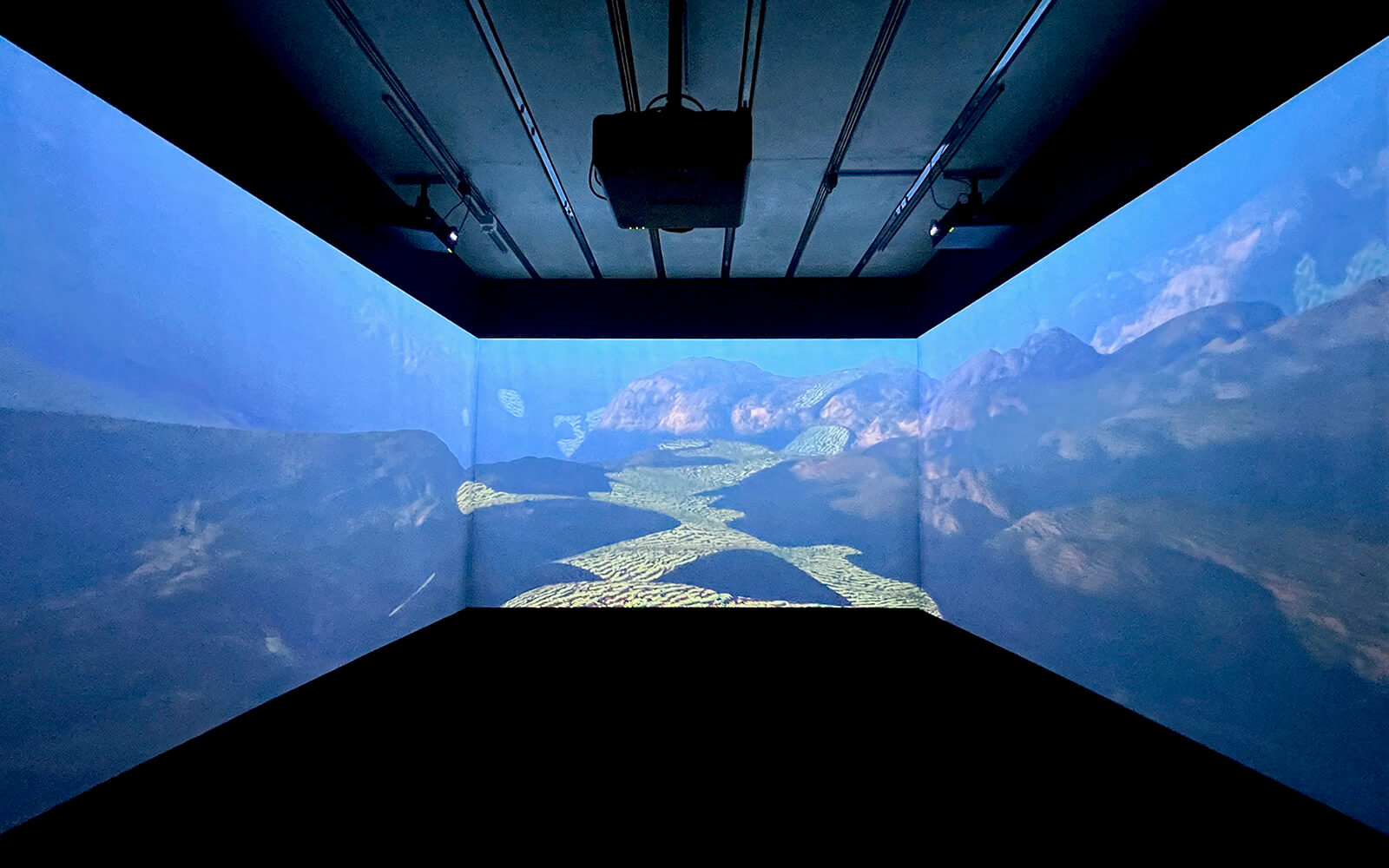
Frustrated with the state of today’s social media platforms and how they extract attention (“I feel trapped!”), German graphic designer and creative coding enthusiast Tim Rodenbröker launches a radical alternative: 128kb Challenge is a distraction-free, community-first feed for discovering and sharing minimalist programmed works. Anyone working in Processing, p5.js, or GLSL can participate by submitting GIFs that adhere to the 128×128 pixels, 128 colours, and 128 kilobyte size limit.
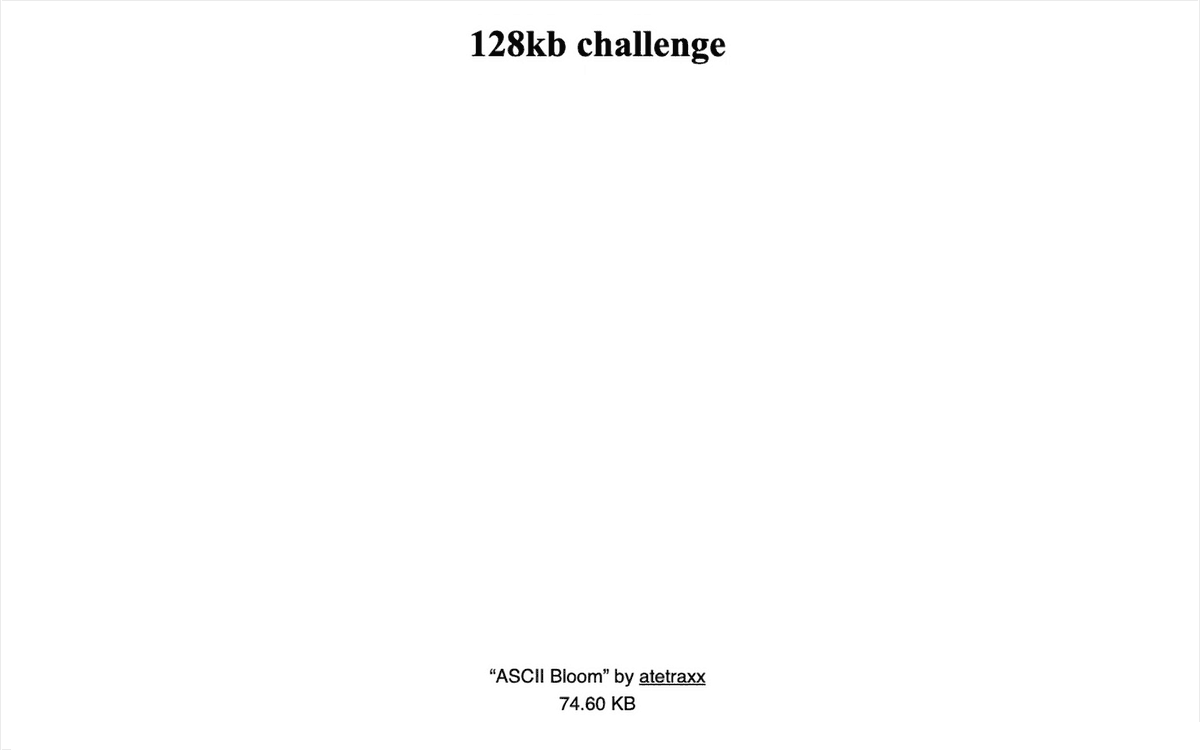
A timely showcase of early computer drawing and painting in the age of generative AI, “Harold Cohen: AARON” opens at New York’s Whitney Museum. Curated by Christiane Paul, it honours Cohen’s pioneering 1970s and ’80s process, with recreations of his plotters running live in-gallery (each operating different versions of the AARON software) alongside key works. “Cohen used to joke that he would be the only artist ever who posthumously makes work,” says Paul of the late artist’s enduring prescience.
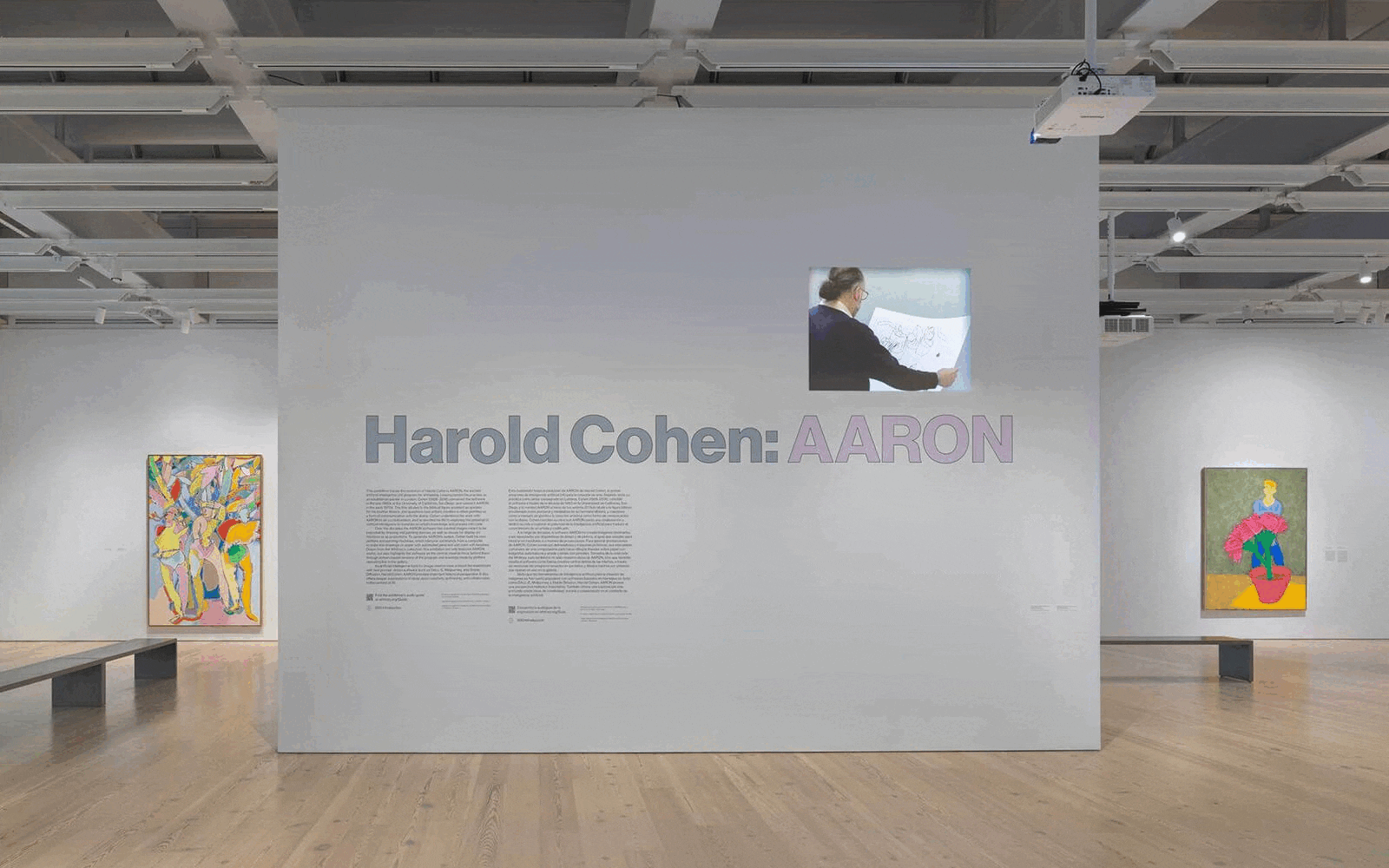
Honouring the centenary of late digital art pioneer Vera Molnar (1924-2023) as part of this year’s Genuary, American media artist and lecturer Golan Levin shares a re-code of Molnar’s 1970 plotter work, À la Recherche de Paul Klee. Realized in p5.js and fully accessible via the p5.js online editor, Levin’s tribute and countless others were prompted by generative artists Melissa Wiederrecht and Piter Pasma, who set the Molnar theme for the online creative coding sprint on Genuary 5th.
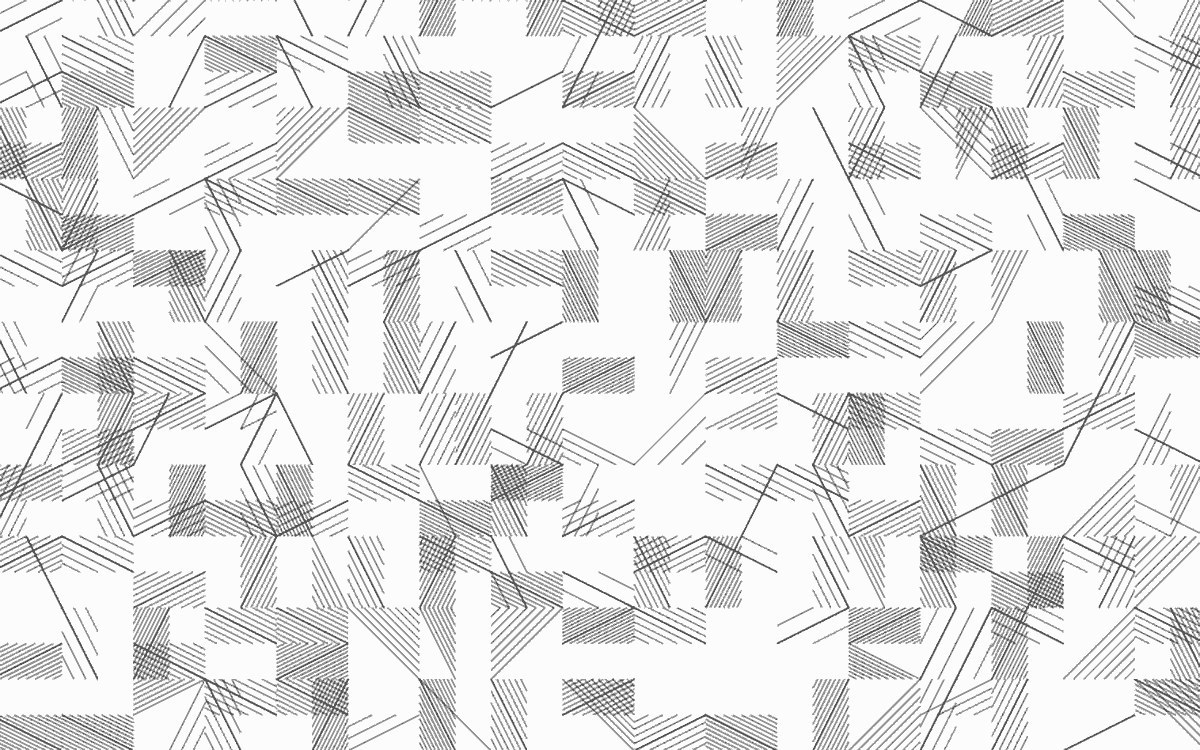
The third act in curators Dominique Moulon, Alain Thibault, and Cathernine Bédard’s exhibition series, “Endless Variation,” opens at the Canadian Cultural Centre, Paris, as part of the 2023 Némo Biennial. Works by ten artists including Nicolas Baier, Salomé Chatriot (image: Idol (Hydra 4), 2023), Nicolas Sassoon, Christa Sommerer & Laurent Mignonneau, and Timothy Thomasson explore nascent generative processes and the transition from artist studio to computer interface.
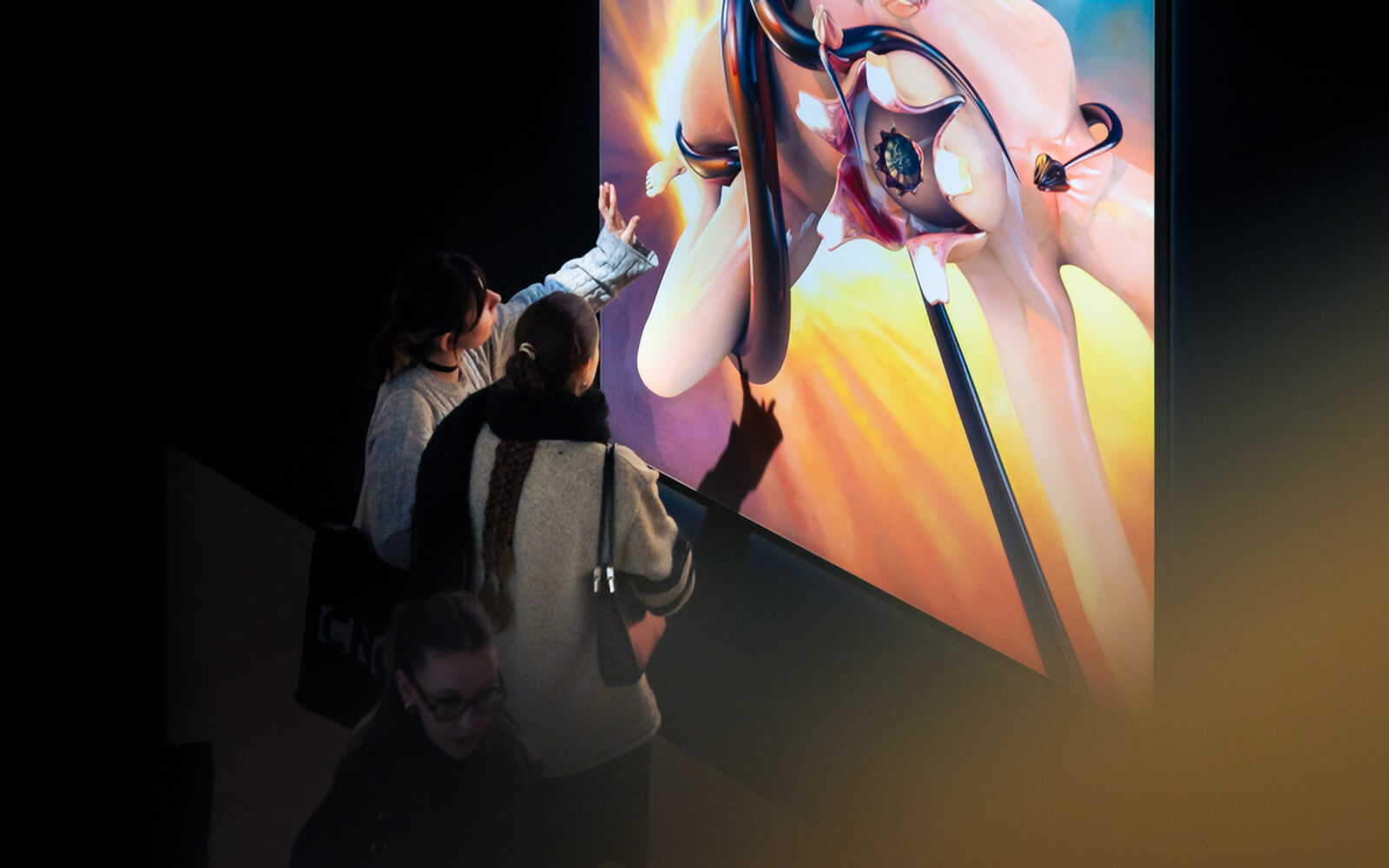
“Cytographia is an elegy for species we will never know, or will never know again, expressed through generative illustrations from an imaginary book about imaginary organisms.”
Organized by the NFT platform Verse, American generative artist John Provencher presents two playful net.art-inspired bodies of work at Cromwell Place in London. The first, over-time (2023), pays homage to the blocky visual language of Alexei Shulgin’s Form Art (1997) via dithered animations of twisting Lissajous curves, while the second, HAHA (2023, image), sardonically “visualizes and plays on the transactional nature of NFTs” by spewing an endless stream of “generative receipts” from a thermal printer.
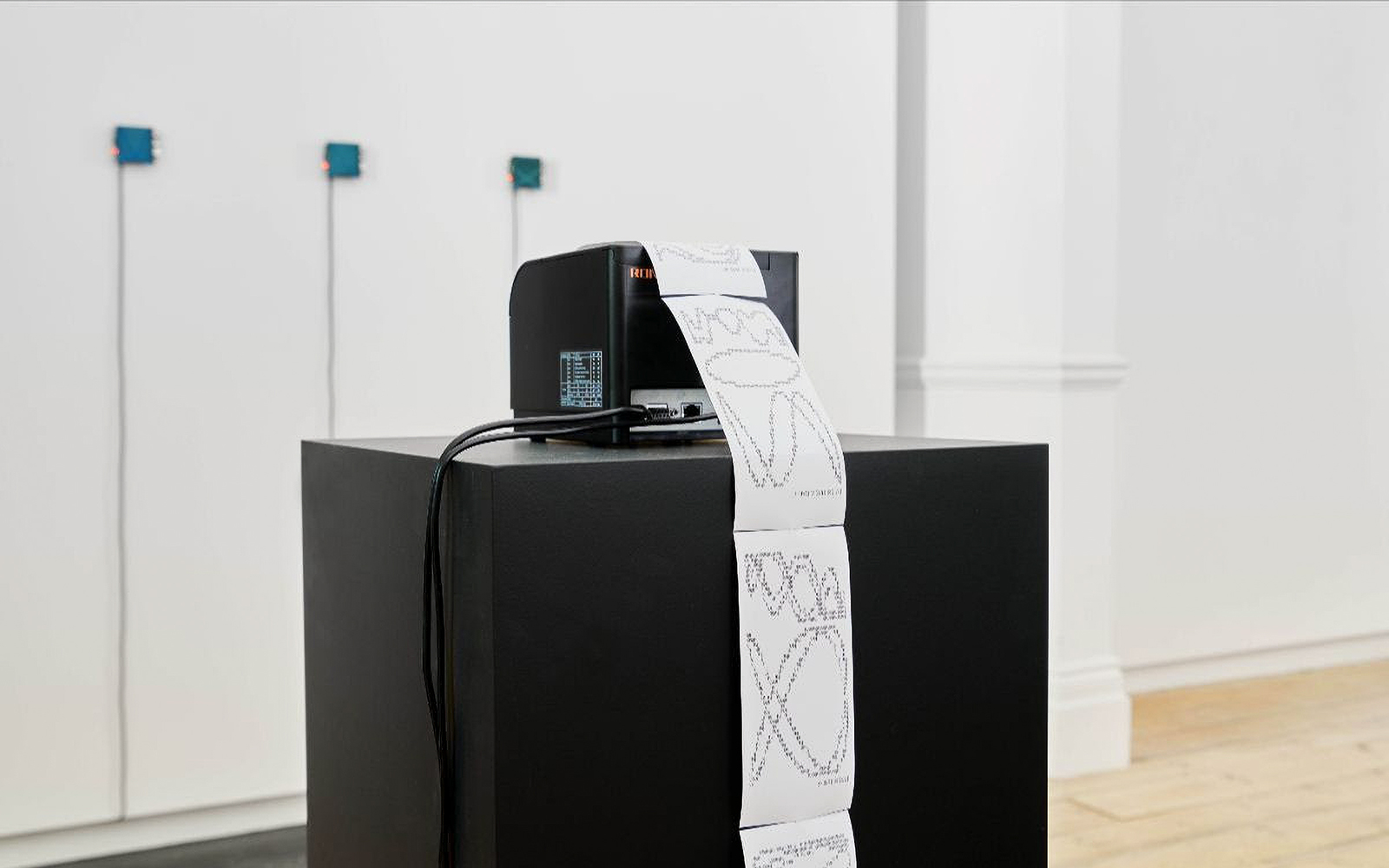
“Interreality,” a group show involving many leading digital artists, opens at The Desmond Tower in Los Angeles. Produced by bitforms and PR For Artists, it presents works by participants including Refik Anadol, Claudia Hart, Auriea Harvey, Tyler Hobbs, Rafael Lozano-Hemmer, Maya Man, and Manfred Mohr. Focused on the gap between ‘digital’ and ‘physical,’ its artists demonstrate how realms “commonly perceived as separate, can be unified because the divisions between them are illusory,” writes curator Mieke Marple.
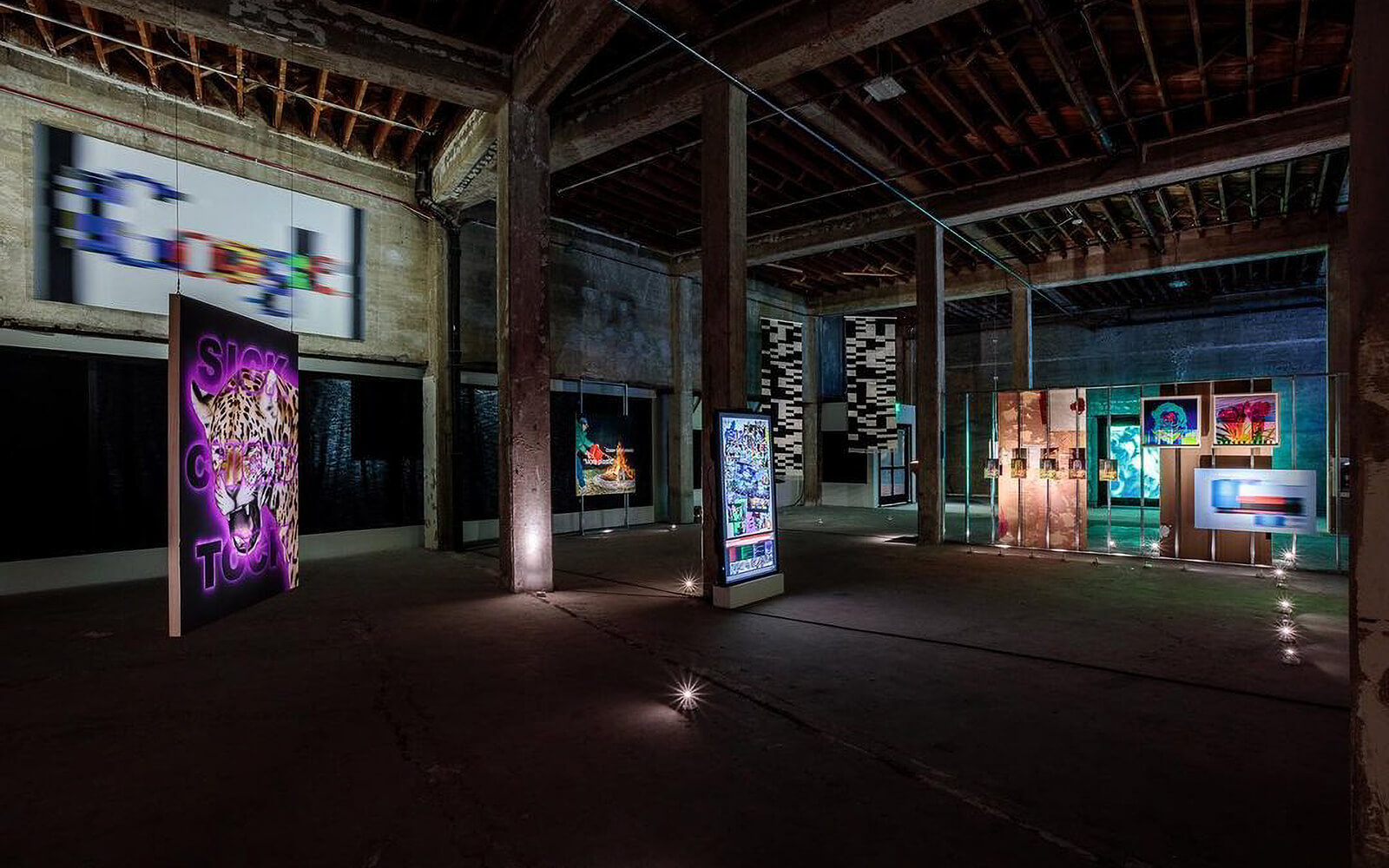
“GEN/GEN: Generative Generations,” a generative art survey linking practitioners past and present, opens at Gazelli Art House London. Artists including Sougwen Chung, Licia He, Tyler Hobbs, Rhea Myers, Piter Pasma, Melissa Wiederrecht, and Stephen Willats contribute prints, plots, screen-based works, and NFTs. Multi-generational, visitors can take in 1980s paintings by Harold Cohen’s prescient AARON program in one glance and Brendan Dawes’ sculpture You, Me And The Machine (2022), the next.
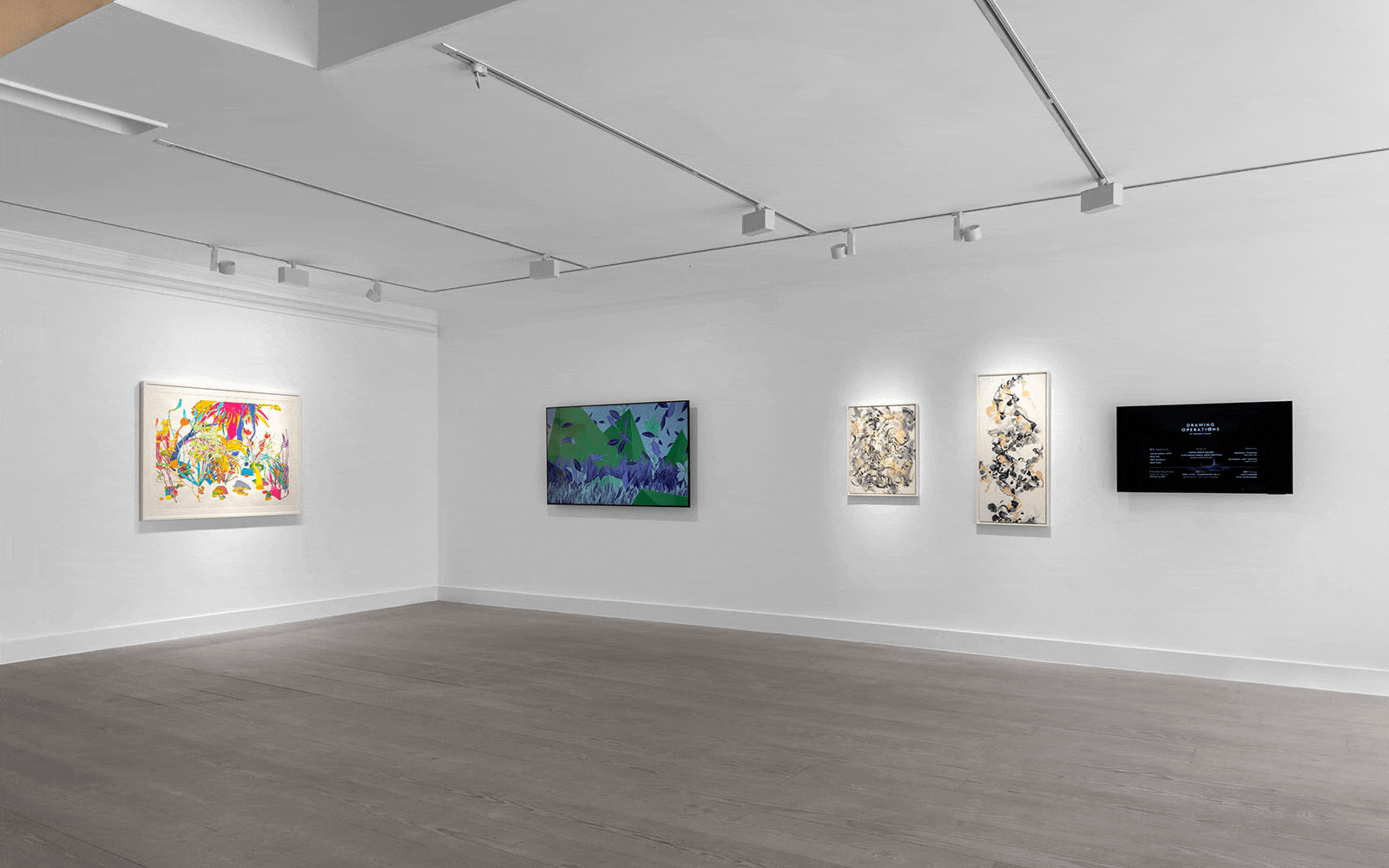
“Someone once told me that, with blacksmithing, if you want to know the quality of someone’s work you look at their tools (because blacksmiths make their own tools). Generative programming is the same thing.”
Generative art NFT platform fxhash announces a $5 million seed raise with venture capital firms and angel investors including Tezos Foundation, PunkVenturesDAO, Casey Reas, and thefunnyguys (Le Random). The funds will be used to hire more team members, support development of a 2.0 release (integrating Ethereum) and tools for art institutions, and bolster the platform’s mission of “empowering anyone, anywhere, to artistically express themselves with code,” they tweet (image: Zancan Garden, Monoliths, 2021).
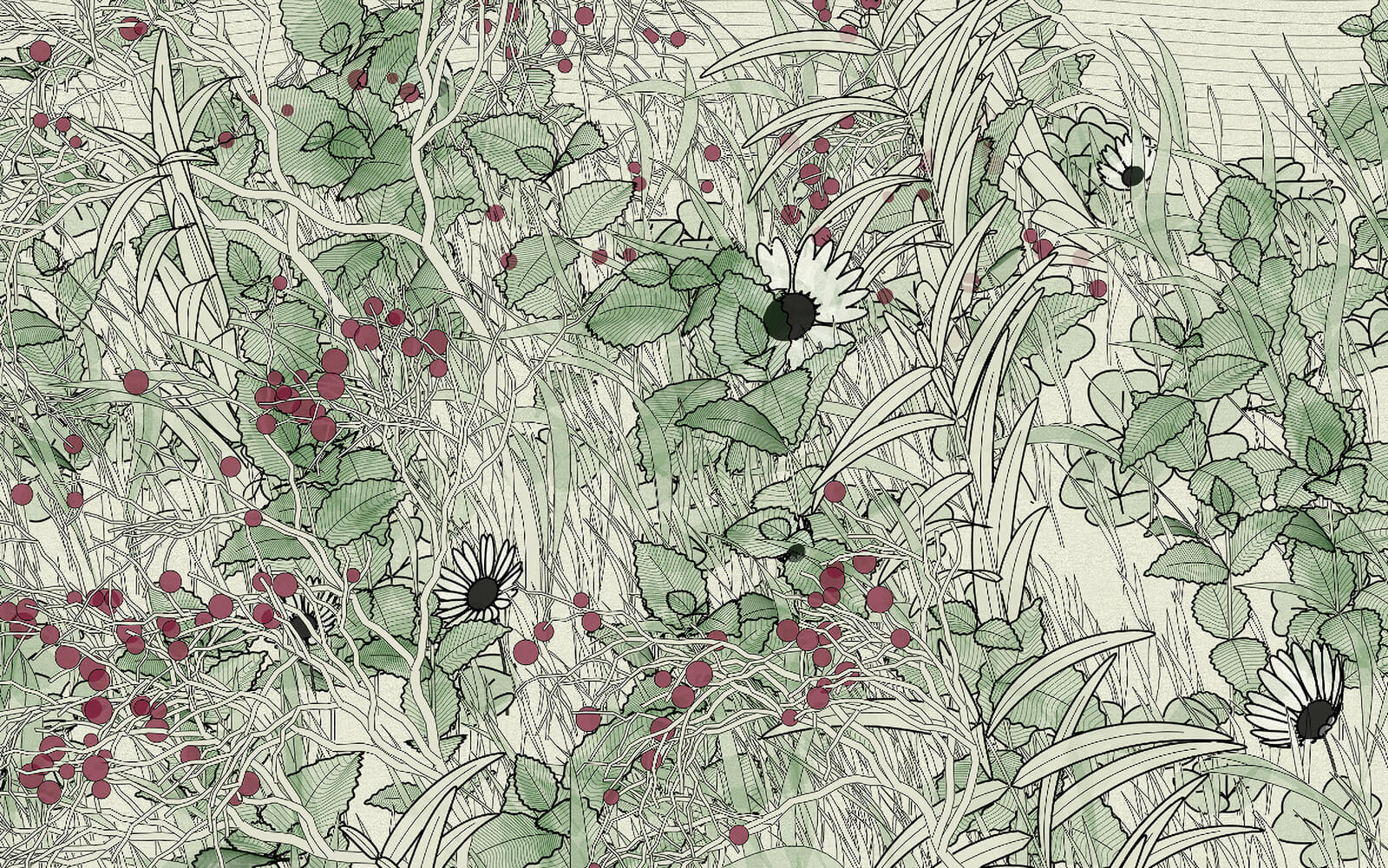
Showcasing work spanning video and print, Zach Lieberman’s solo exhibition “Studies in Color, Light and Geometry” opens at Cromwell Place in London. Organized by the Verse NFT platform alongside several digital editions, it presents a selection of the American artist’s polychromatic horizontal banding and reflection studies. Nodding to precedents László Moholy-Nagy and Abraham Palatnik, it encapsulates the “geometry, animation, gesture, and graphic forms” at play in Lieberman’s steady stream of daily code sketches.
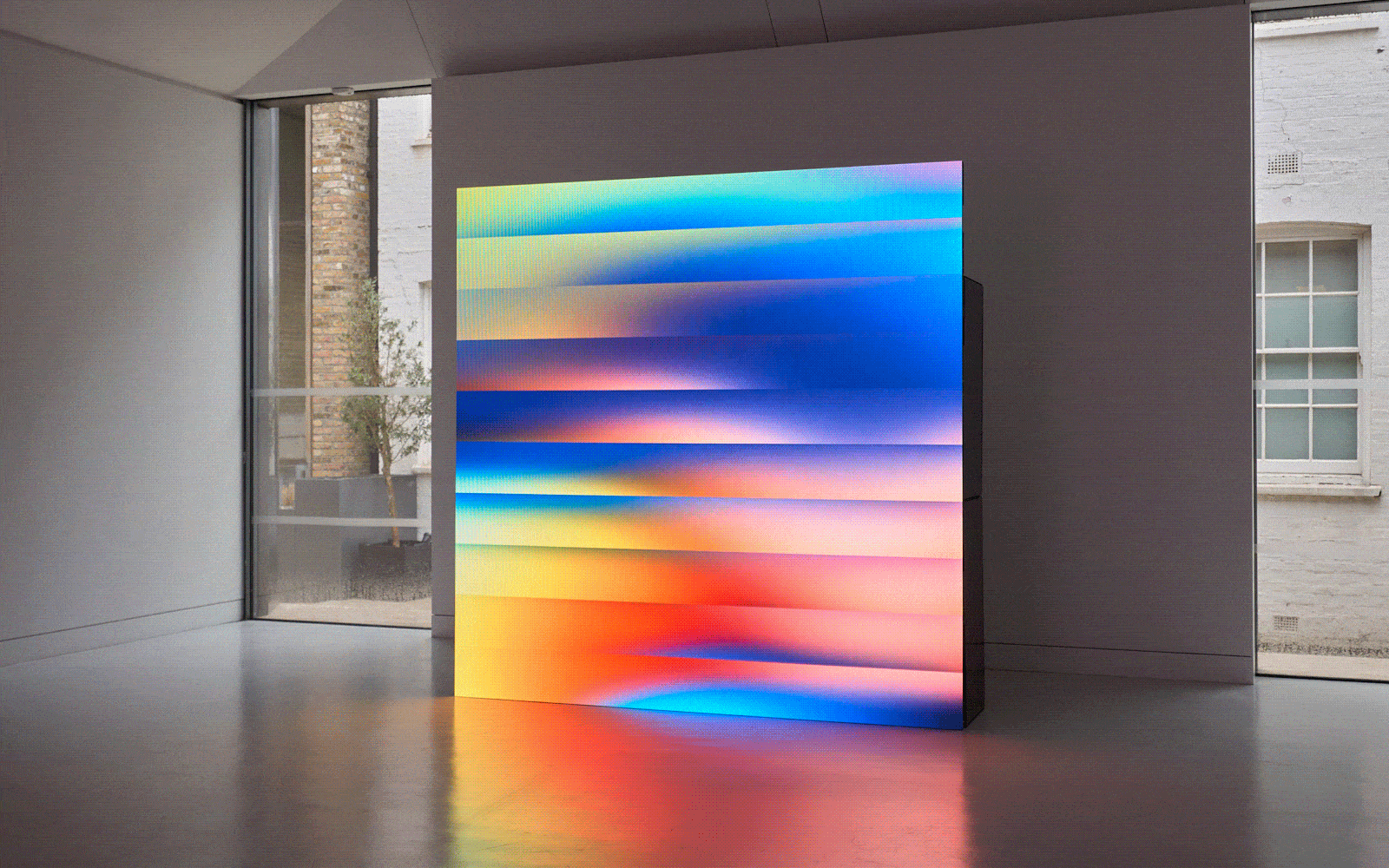
In the wake of its new After AI issue, the Australian art magazine Artlink revisits its special issues on digital media art practice, beginning with Art & Technology (image), published in 1987 in collaboration with the Australian Network for Art and Technology (ANAT) and Apple. Writer Julianne Pierce attributes this “prescient commitment” to founding editor Stephanie Britton’s exposure to holographics, digital animation, and computer-generated video in Adelaide’s Experimental Art Foundation (EAF).
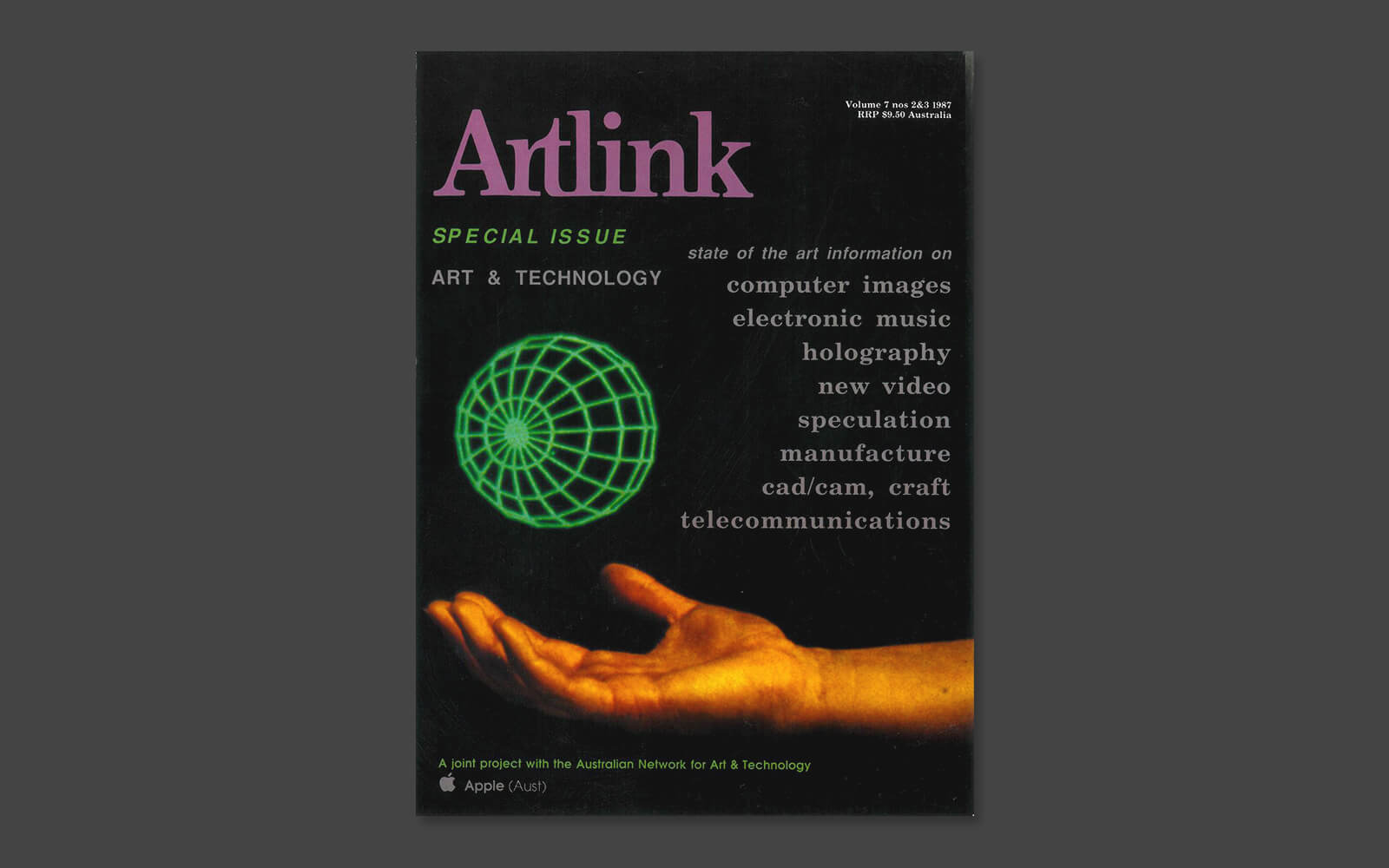
A computer art ‘deep cut,’ the likes of which only DAM Projects could present, Wolfgang Kiwus’ “Out of the Attic” opens in Berlin. Featuring a trove of 1990s stark noise field and monochromatic lattice plots from the musician and writer who took up computer art in 1987, the show honours Kiwus in the aftermath of his 2022 passing. Conceptually rigorous, he experimented with dot matrix printers before adopting plotters, and moved in the same circles as Max Bense, Frieder Nake, and Vera Molnar.
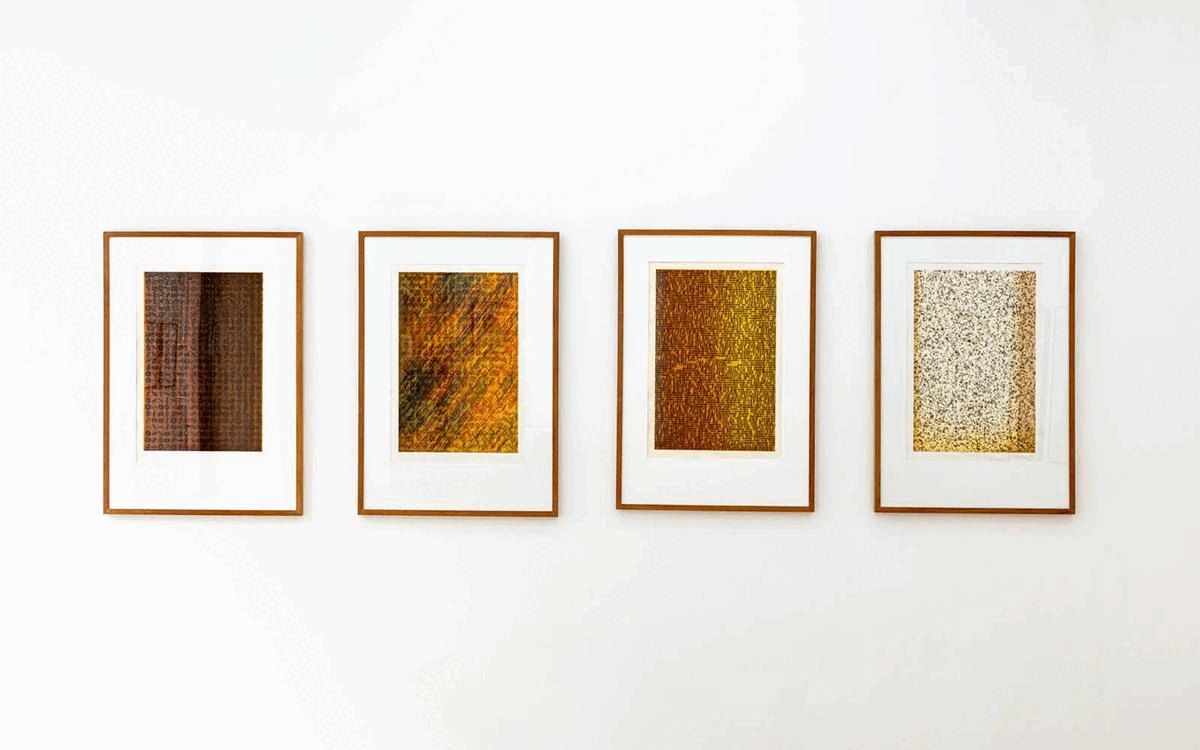
Spanish software engineer Inigo Quilez launches Human Shader, a web-project that aims to crowd-source the creation of “the first-ever brain-powered mathematical image.” Participants are invited to claim a random pixel, hand-compute its RGB values, and submit the results along with a photo of their pen-and-paper calculations. As a veteran demoscener, Quilez is no stranger to computer graphics wizardry: he’s behind the Shadertoy platform, the Quill VR painting tool, and Pixar’s Wonder Moss generator.
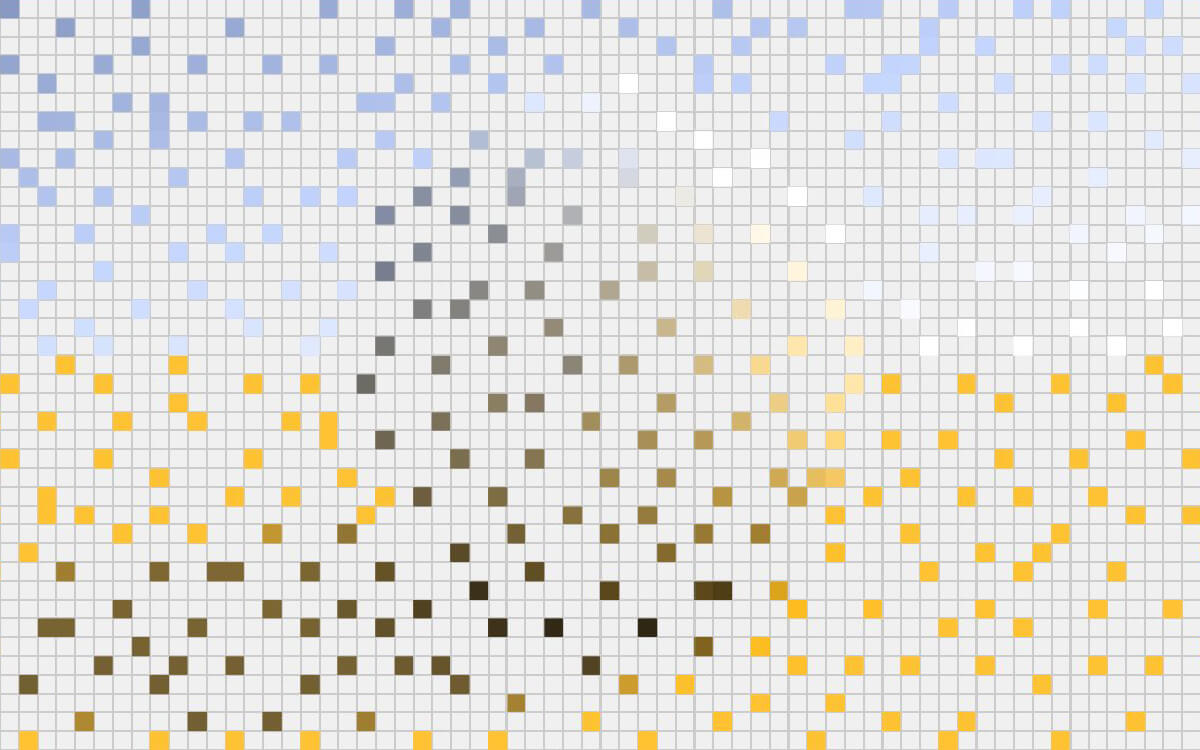
Against the backdrop of the Los Angeles County Museum of Art (LACMA) retrospective “Coded: Art Enters the Computer Age, 1952-1982,” four artists gather to ‘fill’ Casey Reas’ software installation An Empty Room (2023) with intimate, evocative gestures. More happening than performance night, the program fittingly called “A Full Room” brings together Edgar Fabián Frías, Lauren Lee McCarthy (image), Romi Ron Morrison, and Reas himself who, through song, poetry, and prayer, ask a vexing question: “What is social software?”
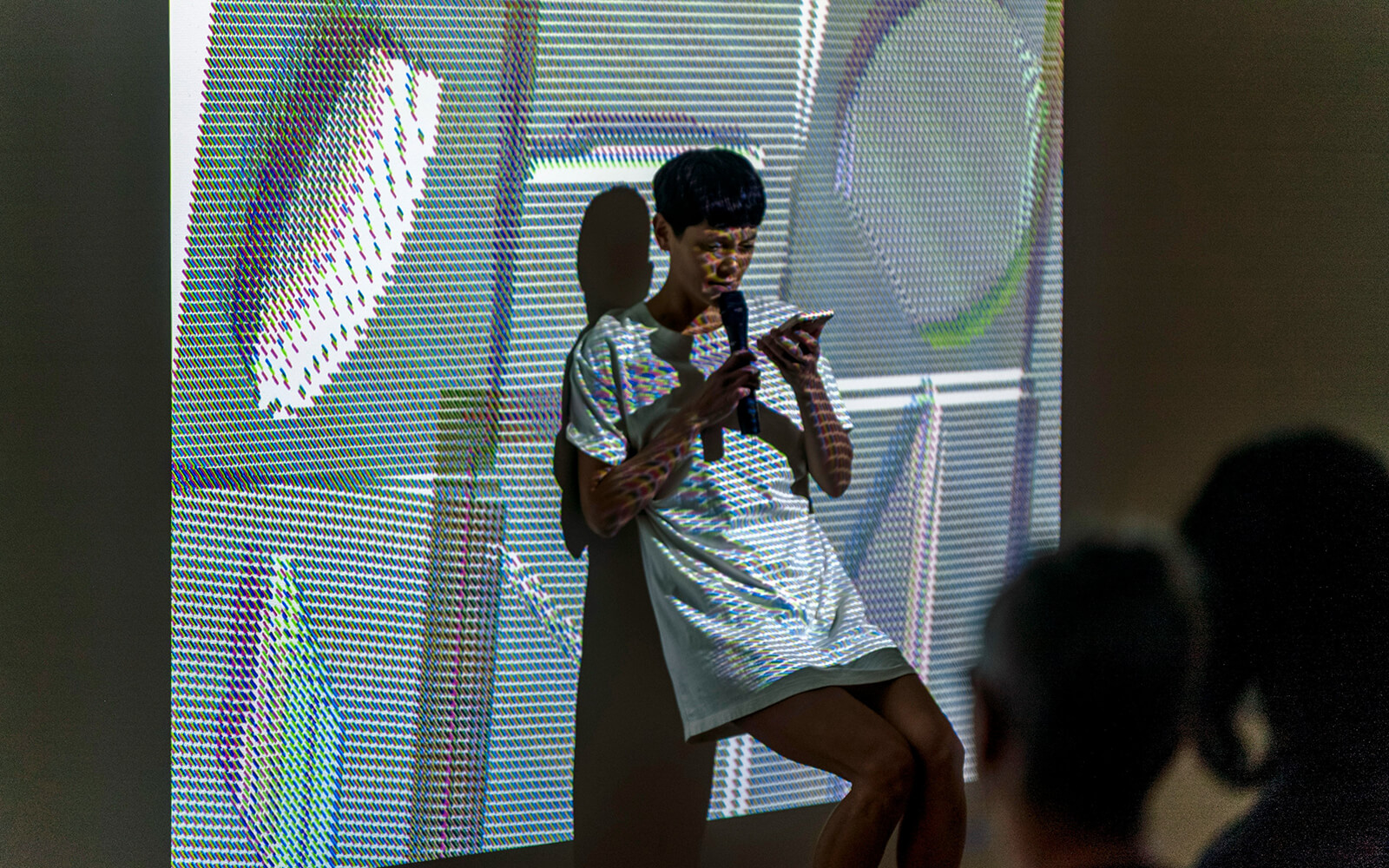
“Unlike traditional artists, I think generative artists operate a lot more, structurally speaking, like musicians. When a musician releases new music, they have tour tickets, which are somewhat reasonably priced and fans can feel like they’re directly supporting the artist.”
Daily discoveries at the nexus of art, science, technology, and culture: Get full access by becoming a HOLO Reader!
- Perspective: research, long-form analysis, and critical commentary
- Encounters: in-depth artist profiles and studio visits of pioneers and key innovators
- Stream: a timeline and news archive with 1,200+ entries and counting
- Edition: HOLO’s annual collector’s edition that captures the calendar year in print
